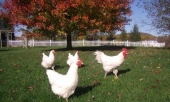
















Seed the Mind, Harvest Ideas.
http://farmwhisperer.com





Paul Cereghino- Ecosystem Guild
Maritime Temperate Coniferous Rainforest - Mild Wet Winter, Dry Summer
















How permies.com works
What is a Mother Tree ?








hijacker wrote:
It looks good, buit it wouldn't work for stock, every animal we have - pigs, horses, goats, sheep and cattle eat willow and would destroy that type of fence in hours. And with Bambo, being a grass every thing from our ducks and geese to the above have grazed our bambo almost to death.
Idle dreamer
 1
1











Permaculture will save civilization: http://www.human20project.com





Idle dreamer

















 1
1

























Brenda
Bloom where you are planted.
http://restfultrailsfoodforestgarden.blogspot.com/




"A society grows great when old men plant trees whose shade they know they shall never sit in."




"A society grows great when old men plant trees whose shade they know they shall never sit in."




permacaper McCoy wrote:As to the question on living fences, I'm going to try to contain my flerd of sheep, goats, donkey, and cattle using a mix of osage orange, black locust...
My project thread
Agriculture collects solar energy two-dimensionally; but silviculture collects it three dimensionally.




Jack Shawburn wrote:I have a cunning plan...err idea.
How about laying out your paddocks for your chickens
and planting a Living Fence "Fedge" with Willow ?
My project thread
Agriculture collects solar energy two-dimensionally; but silviculture collects it three dimensionally.




















Leron Bouma wrote: Since I just saw a video of sheep and goats feeding on black locust branches I know that the "black locust toxic to everything" story is nonsense.
My project thread
Agriculture collects solar energy two-dimensionally; but silviculture collects it three dimensionally.




CJin VT wrote:
I'm not trying to be rude but I doesn't seem like a great idea to play fast and loose with other people's livestock.




Pastured pork and beef on Vashon Island, WA.




Leron Bouma wrote:And I will also defer to the judgement of Ben Falk when he feeds black locust foliage to sheep and goats. If he was promoting poisoning sheep and goats, he would lose credibility as a permaculture designer very quickly.
My project thread
Agriculture collects solar energy two-dimensionally; but silviculture collects it three dimensionally.




ivan. wrote:... I have several thoughts I''d like to throw out there, based on my own situation (Western WA, Zone 8, plenty of rain, Maritime and Mediterranean climate).
My project thread
Agriculture collects solar energy two-dimensionally; but silviculture collects it three dimensionally.




think you need to flesh out your situation. Is this fence to keep animals in or out? What kind of animals?
Pastured pork and beef on Vashon Island, WA.

|
roses are red, violets are blue. Some poems rhyme and some are a tiny ad:
The new purple deck of permaculture playing cards
https://www.kickstarter.com/projects/paulwheaton/garden-cards
|








